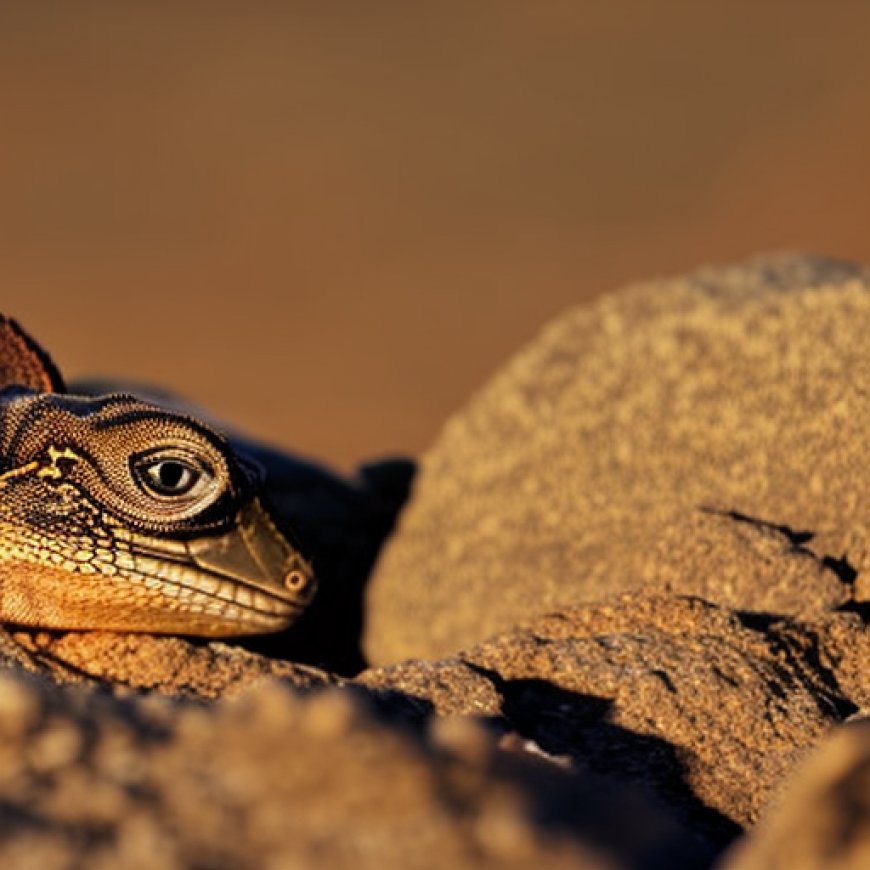Dunes Sagebrush Lizard Finally Protected as Endangered in New Mexico, Texas
Dunes Sagebrush Lizard Finally Protected as Endangered in New Mexico, Texas Center for Biological Diversity

 “`html
“`html
Sustainable Development Goals Report: Dunes Sagebrush Lizard

Introduction
The U.S. Fish and Wildlife Service has officially added the dunes sagebrush lizard, native to southeastern New Mexico and West Texas, to the endangered species list. This action aligns with several Sustainable Development Goals (SDGs), particularly those focused on life on land (SDG 15) and climate action (SDG 13).
Habitat and Threats
The dunes sagebrush lizard inhabits a small portion of the Permian Basin. Over 95% of its habitat has been lost due to oil and gas development and sand mining for fracking. These activities directly threaten the lizard’s survival, making it imperative to address these issues to meet SDG 15.
Conservation Efforts
Michael Robinson, a senior conservation advocate at the Center for Biological Diversity, expressed relief at the new protections. The designation of critical habitat is expected to close loopholes that previously allowed habitat destruction. This is a significant step toward achieving SDG 15.
Historical Context
As early as 1982, the U.S. Fish and Wildlife Service identified the need for protection due to habitat destruction from agriculture. However, action was delayed until a 2022 lawsuit and subsequent legal agreement with the Center for Biological Diversity forced the agency to act.
Ecological Significance
The dunes sagebrush lizard, measuring only 2.5 inches long, has the second-smallest range of any lizard in North America. It inhabits a unique ecosystem where it hunts insects and spiders in wind-blown dunes and burrows into the sand beneath shinnery oak shrubs for temperature regulation.
Call to Action
Robinson emphasized the need to reduce dependence on fossil fuels, not just for the lizard’s future but also for our own. This aligns with SDG 13, which calls for urgent action to combat climate change and its impacts.
Background Information
- 1982: The Service identified the need for protection but did not act.
- 2002: The Center submitted a scientific petition to list the lizard as endangered.
- 2010: The Service proposed protection but struck a deal with the Texas Comptroller’s Office instead.
- 2018: The Center petitioned again, leading to an initial finding that listing was warranted.
- 2022: A lawsuit prompted the final decision to list the lizard as endangered.
Challenges in Species Protection
The U.S. Fish and Wildlife Service has historically been slow in providing timely protections, taking an average of 12 years instead of the intended two to three years. This delay has resulted in at least 47 species going extinct while awaiting protection, highlighting the need for more efficient processes to meet SDG 15.
“““html
SDG Analysis of the Article
1. Which SDGs are addressed or connected to the issues highlighted in the article?
- SDG 15: Life on Land
- SDG 13: Climate Action
- SDG 14: Life Below Water (indirectly related through ecosystem interdependencies)
2. What specific targets under those SDGs can be identified based on the article’s content?
- SDG 15: Life on Land
- Target 15.1: Ensure the conservation, restoration, and sustainable use of terrestrial and inland freshwater ecosystems and their services.
- Target 15.5: Take urgent and significant action to reduce the degradation of natural habitats, halt the loss of biodiversity, and protect and prevent the extinction of threatened species.
- SDG 13: Climate Action
- Target 13.2: Integrate climate change measures into national policies, strategies, and planning.
3. Are there any indicators mentioned or implied in the article that can be used to measure progress towards the identified targets?
- Indicators for SDG 15:
- Indicator 15.1.2: Proportion of important sites for terrestrial and freshwater biodiversity that are covered by protected areas, by ecosystem type.
- Indicator 15.5.1: Red List Index.
- Indicators for SDG 13:
- Indicator 13.2.1: Number of countries that have communicated the establishment or operationalization of an integrated policy/strategy/plan which increases their ability to adapt to the adverse impacts of climate change, and foster climate resilience and low greenhouse gas emissions development in a manner that does not threaten food production (including a national adaptation plan, nationally determined contribution, national communication, biennial update report or other).
4. Findings from Analyzing the Article
| SDGs | Targets | Indicators |
|---|---|---|
| SDG 15: Life on Land | Target 15.1: Ensure the conservation, restoration, and sustainable use of terrestrial and inland freshwater ecosystems and their services. | Indicator 15.1.2: Proportion of important sites for terrestrial and freshwater biodiversity that are covered by protected areas, by ecosystem type. |
| SDG 15: Life on Land | Target 15.5: Take urgent and significant action to reduce the degradation of natural habitats, halt the loss of biodiversity, and protect and prevent the extinction of threatened species. | Indicator 15.5.1: Red List Index. |
| SDG 13: Climate Action | Target 13.2: Integrate climate change measures into national policies, strategies, and planning. | Indicator 13.2.1: Number of countries that have communicated the establishment or operationalization of an integrated policy/strategy/plan which increases their ability to adapt to the adverse impacts of climate change, and foster climate resilience and low greenhouse gas emissions development in a manner that does not threaten food production (including a national adaptation plan, nationally determined contribution, national communication, biennial update report or other). |
“`
Copyright: Dive into this article, curated with care by SDG Investors Inc. Our advanced AI technology searches through vast amounts of data to spotlight how we are all moving forward with the Sustainable Development Goals. While we own the rights to this content, we invite you to share it to help spread knowledge and spark action on the SDGs.
Fuente: biologicaldiversity.org

Join us, as fellow seekers of change, on a transformative journey at https://sdgtalks.ai/welcome, where you can become a member and actively contribute to shaping a brighter future.







